Types of Roof Styles for Your Dream Home
When it comes to building your dream home, choosing the right roof style is just as important as the foundation and walls. A roof not only provides protection from the elements but also adds to the overall aesthetic appeal of your home. With so many different types of roof styles available, it can be overwhelming to choose the right one for your needs.
In this article, we will explore 11 different types of roof styles that can match your taste, complement your home’s architecture, and provide the functionality you need. From traditional pitched roofs to modern curved and dome styles, we’ve got you covered. So, whether you are building a new home or planning to replace an old roof, read on to discover the perfect roof style for your dream home.
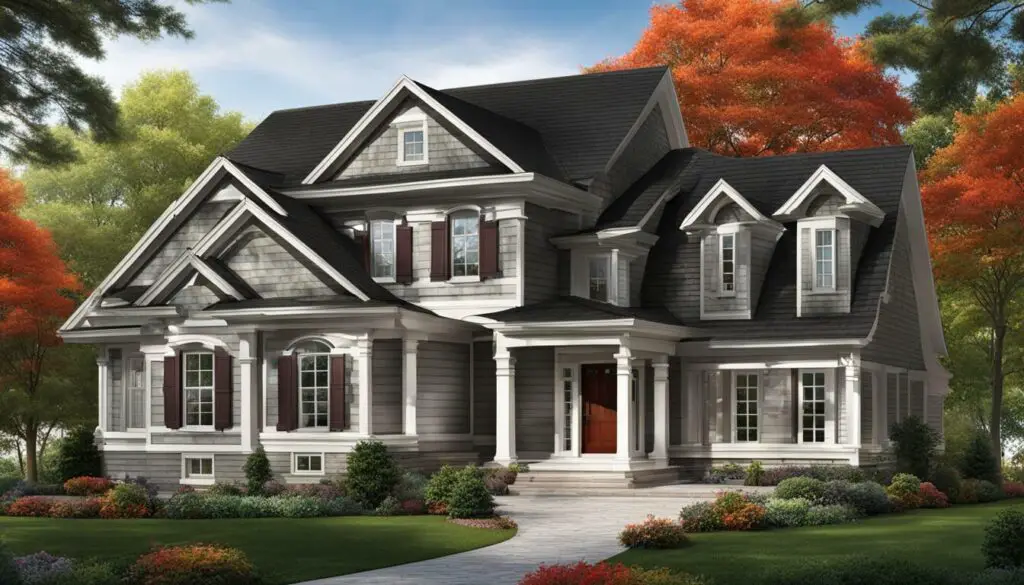

1). Butterfly Roof
The butterfly roof is a unique and eye-catching roof design that has been gaining popularity in modern architecture. As its name suggests, it resembles the wings of a butterfly, with two inward-sloping roof surfaces that meet at the center, creating a V-shaped valley. This design allows for increased natural light, making it perfect for homes with large windows or skylights.
Aside from its aesthetic appeal, the butterfly roof also has practical benefits. Its shape allows for easy water drainage, preventing water from pooling and causing leaks. This design is particularly useful in areas with heavy rainfall or snowfall.








The butterfly roof can be seen in many contemporary homes and buildings around the world, and it has become a favorite of architects and designers who seek to create organic and unique roof styles. If you’re looking for a roof design that is both functional and visually striking, the butterfly roof may just be the perfect choice for your dream home.


2). Bonnet Roof
The bonnet roof, also known as a hipped roof, is a traditional roof style that features four sloping sides that meet at a ridge in the center. The lower slope of the roof extends further out, creating a sheltered overhang. This overhang provides additional protection from the elements and can be used as a porch or patio.
Bonnet roofs are commonly found in traditional and farmhouse-style homes, adding a classic and timeless touch to the architectural design. They are particularly suitable for areas with high winds and heavy rain, as the sloping sides allow for efficient water runoff and wind resistance.
Similar to the hipped roof, the bonnet roof offers a variety of options for incorporating dormers or additional roof extensions, allowing for increased headspace and natural light.
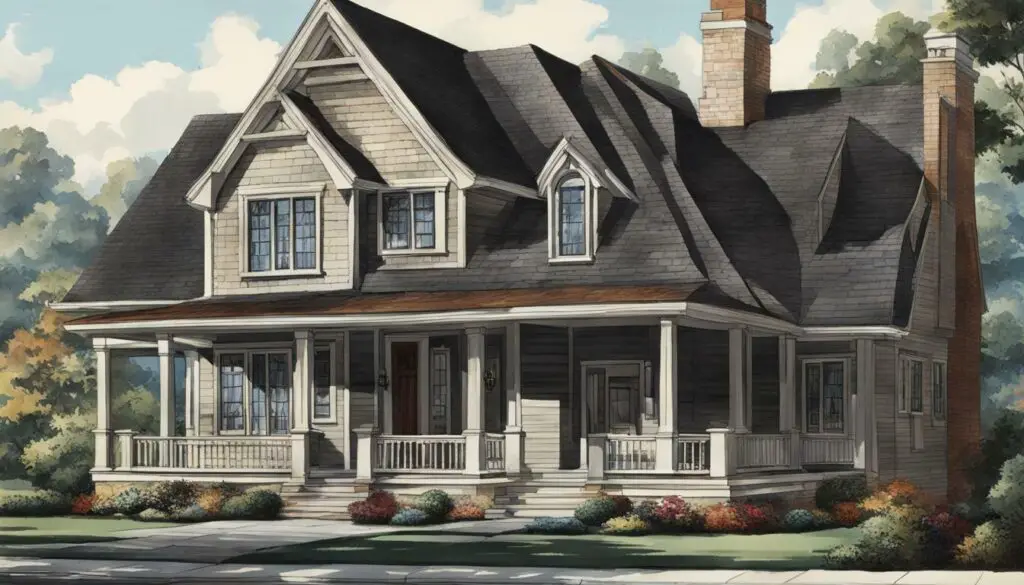

The bonnet roof is a versatile and practical option for those seeking a traditional roof style that offers both aesthetic appeal and functionality.
3). Clerestory Roof
The clerestory roof is a contemporary roof style that features a row of windows or glass panels positioned at the upper portion of a high, slanted roof. This design allows for ample natural light to enter the space below. The clerestory roof is often used in modern architectural designs, adding a sense of openness and lightness to a building.








The use of clerestory windows can also help reduce energy costs by providing natural light, reducing the need for artificial lighting during the day. This can be particularly beneficial in commercial buildings such as office spaces, where natural light can improve productivity and well-being among employees.
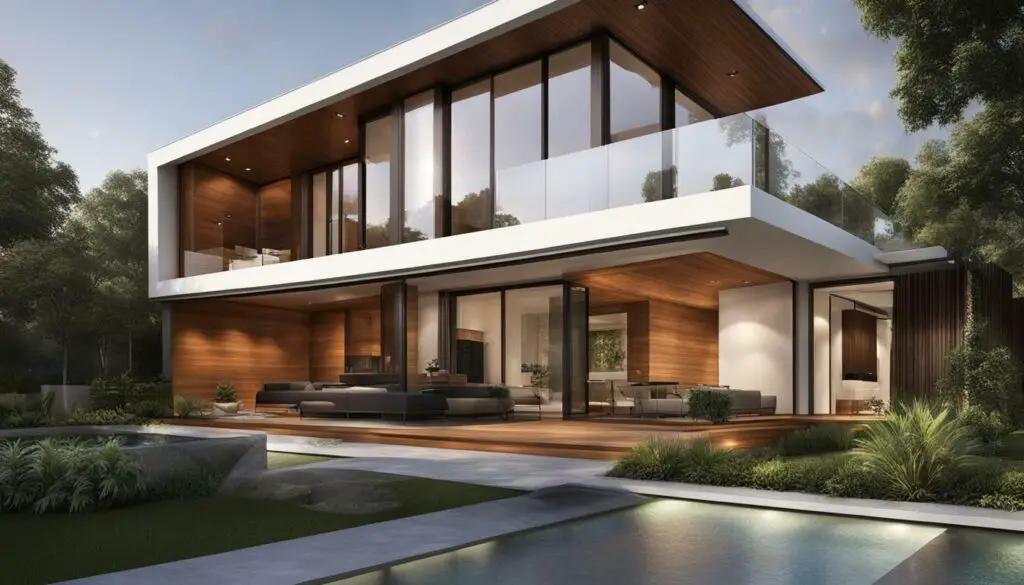

When designing a building with a clerestory roof, it is important to consider the orientation of the building. Placing the clerestory windows toward the south can provide maximum solar gain during the winter months while shading them during the summer can prevent overheating.
The clerestory roof is an excellent choice for those who want to enjoy ample natural light and a contemporary aesthetic. Consider this roof style for your next building project for a modern and sustainable approach to roofing.
4). Combination Roof
The combination roof is a versatile and popular roof style that allows for endless possibilities. With this style, you can combine two or more different roof types, resulting in visually interesting and unique rooflines that can complement almost any architectural style.
Roof style combinations can be a great option for those who want to add an extra level of customization to their home. It can also serve a functional purpose by allowing you to incorporate specific features, such as skylights or solar panels. This versatile roof type can accommodate various architectural elements, including gable, hip, and flat roofs.








Whether you want a traditional or modern look for your home, the combination roof can deliver. It provides a perfect mix of aesthetic appeal, practicality, and functionality. Consider incorporating this roof type into your dream home to create a unique and personalized look.
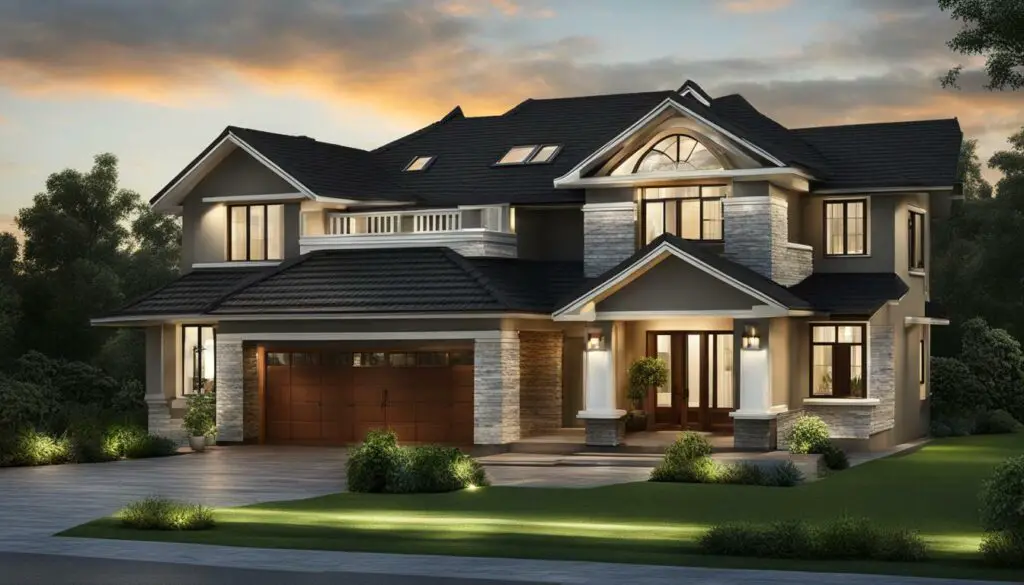

5). Gable Roof
The gable roof is a popular and classic roof style that is commonly found in traditional and colonial-style homes. It features two sloping sides that meet at a ridge in the center, forming a triangular shape. The steep pitch of the roof allows for efficient water and snow runoff, making it a practical choice for areas with heavy precipitation.
The gable roof is a pitched roof style, which means that it has a significant slope or angle. This allows for increased attic space, making it perfect for storage or additional living space. The traditional aesthetic of the gable roof makes it a popular choice for homeowners who value classic architectural styles.
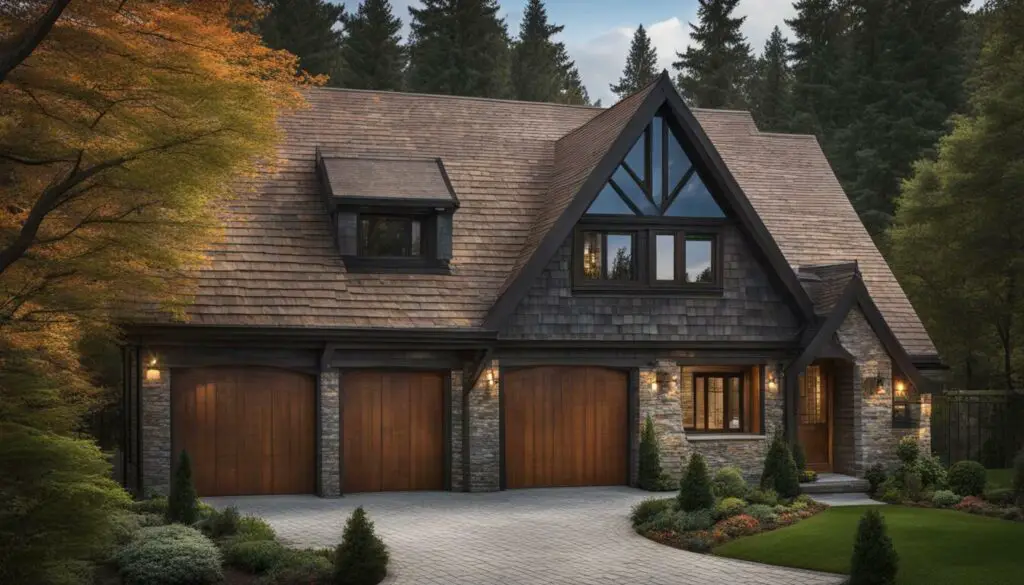

Overall, the gable roof is a great choice for homeowners who want a practical and traditional roof style. Its steep pitch, efficient water runoff, and increased attic space make it a functional choice, while its classic aesthetic is sure to add curb appeal to any home.
6). Cross Gabled Roof
The cross-gabled roof style is a classic, yet complex roof design that adds a sophisticated touch to architectural designs. It is created by intersecting two or more gable roofs at right angles, forming an “L” or “T” shape.
This design creates a visually interesting roofline, adding complexity and interest to the overall structure. The intersecting rooflines can create additional interior space, allowing for unique room shapes and configurations.








The cross-gabled roof is commonly found in Tudor-style and Victorian-style homes due to its intricate design and sophisticated aesthetic.
| Key Features: | – Two or more gable roofs intersecting at right angles |
|---|---|
| Pros: | – Visually interesting and unique – Additional interior space |
| Cons: | – Higher construction costs – Requires more complex roof framing |
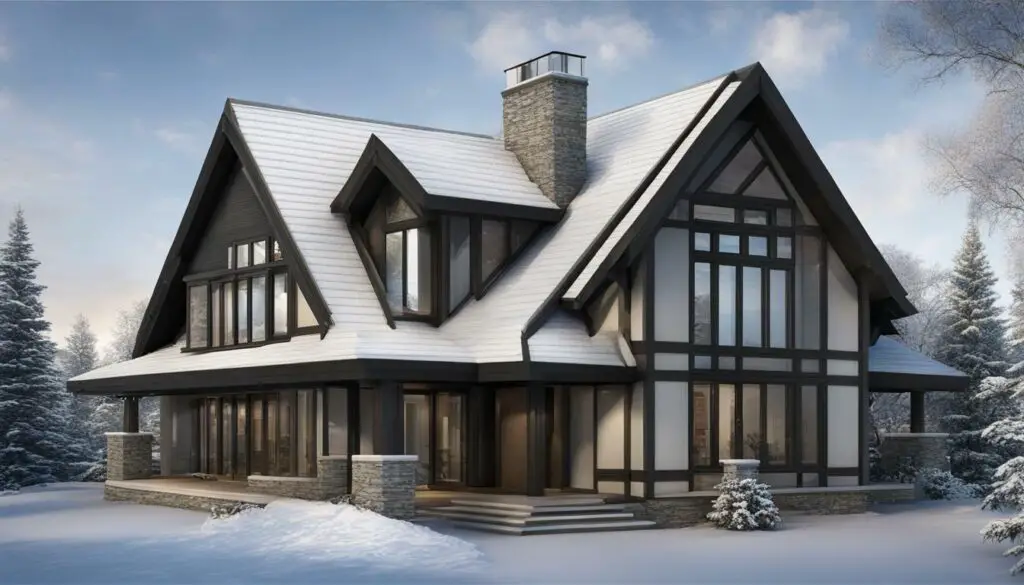

The cross-gabled roof is a complex design that adds a level of sophistication to any architectural project. Its intersecting rooflines and unique shape make it a visually interesting choice for any home design.
7). Cross Hipped Roof
If you’re looking for a unique roof design that adds architectural interest and functionality to your home, a cross-hipped roof might be the right choice for you.
Similar to the cross-gabled roof, the cross-hipped roof features intersecting rooflines, but with hipped roofs instead of gable roofs. This creates a unique roof design that adds both aesthetic appeal and practical advantages.
The intersecting hipped roofs create additional attic space and can provide a more balanced roofline. This style of roof is often found in various architectural styles, including craftsman and bungalow homes.
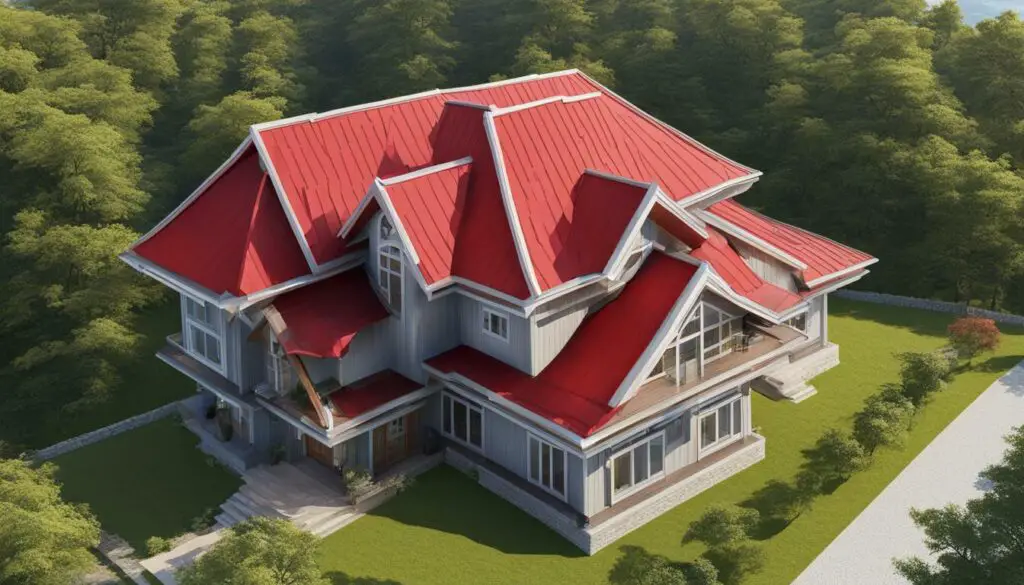

The cross-hipped roof design also allows for increased ventilation and natural light, providing a more comfortable living space. It can also be a cost-effective option as it reduces the need for complicated framing designs and can be constructed with simpler materials.
If you’re looking for a unique roof design that adds functionality and architectural interest to your home, the cross-hipped roof might be the perfect choice for you.








8). Curved Roof
The curved roof is a modern and unique roof style that adds a futuristic touch to architectural designs. This type of roof features a gentle curve that follows the shape of an arc, creating a visually striking appearance. Curved roofs can be found in various contemporary architectural styles, including minimalist and organic designs.
The gentle curve of a curved roof not only adds to its aesthetic appeal but also serves a practical purpose. Using a curved roof allows for water to easily runoff without creating flat areas, preventing potential leaks or roofing problems.
Curved roofs can be made from different materials, such as shingles, metal, or even concrete. The combination of material and shape can create a unique look that can make a building stand out. These roofs can also be combined with other types of roofs, such as a flat roof, to create a visually interesting roofline.
Overall, the curved roof is an excellent choice for those looking for a modern and unique roof style that adds a touch of architectural aesthetics to their dream home.
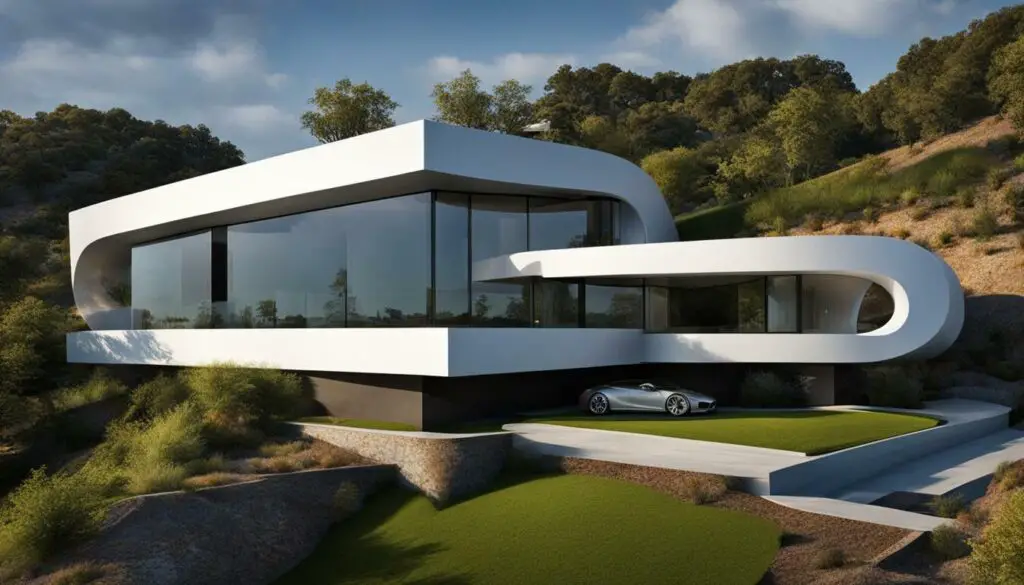

9). Dome Roof
The dome roof is a stunning architectural design that has been used in many iconic landmarks throughout history. This round roof style resembles an upside-down bowl or a hemisphere, and it provides a sense of grandeur and elegance to any building.
The dome roof can be made of various materials, including concrete, brick, and metal. Its curved shape creates a unique visual impact and adds a modern touch to architectural designs. In addition to being aesthetically pleasing, the dome roof also offers structural advantages. Its shape distributes weight evenly, making it a durable and sturdy option for large buildings.
This roof type has been used in many famous architectural landmarks, including the United States Capitol, St. Peter’s Basilica, and the Taj Mahal. Its use in these structures has contributed to its association with prestige and grandeur.


If you are looking for a roof style that will make a bold statement and add a touch of elegance to your home, the dome roof is an excellent option to consider.
10). Dormer Roof: Creating Extra Space and Natural Light
When you’re looking to add more space or natural light to your home, a dormer roof is a great option. This type of roof extends vertically from a sloping roof, creating additional space or windows. Typically found in attic conversions, dormer roofs not only add functionality but also enhance the aesthetic appeal of your home.
One of the benefits of a dormer roof is the additional headspace it provides. By creating more vertical space, you can transform a cramped attic into a functional living space. Additionally, dormer roofs can be designed to create aesthetically pleasing features that enhance the exterior of your home. For example, a gabled dormer roof can add a decorative element to the roofline and create a visual focal point.








Another advantage of dormer roofs is the increased natural light they allow into the space. By adding windows or skylights to the dormer roof, you can transform a dark or dingy attic into a bright and inviting living area. This can have a significant impact on the overall atmosphere of your home, making it feel more spacious and welcoming.
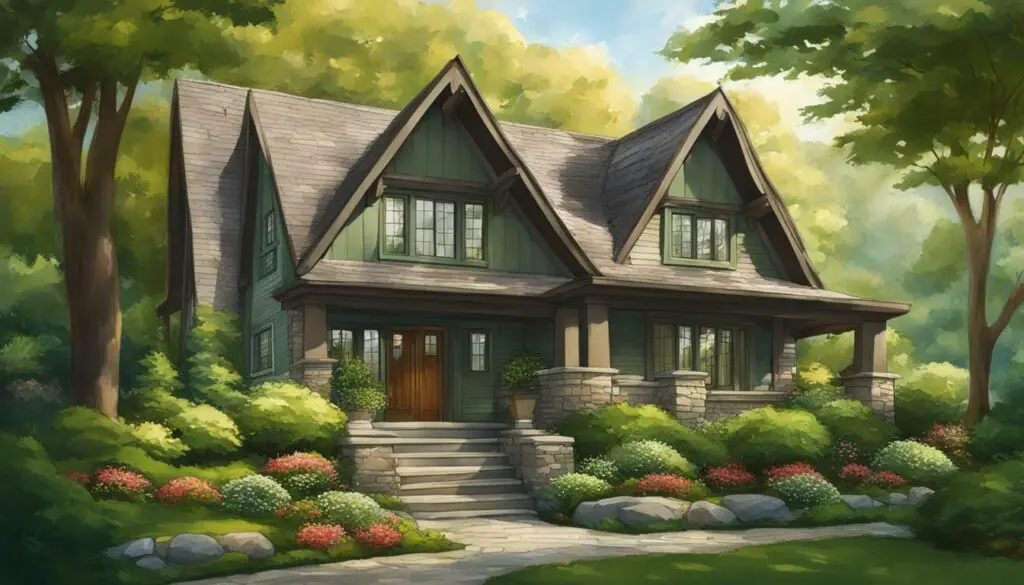

Whether you need additional space, and natural light, or simply want to enhance the curb appeal of your home, a dormer roof is a versatile and practical option. Consider this type of roof extension when planning your next home renovation project.
11). Dutch Gable Roof
The Dutch gable roof is a beautiful hybrid roof style that combines a gable roof with two hipped roof sections on either side. This unique design creates a distinctive roofline that offers both increased attic space and a visually interesting architectural fusion. The gable section provides the classic triangular shape while the hipped roof section provides greater stability and allows for increased natural light to enter the space below.
The Dutch gable roof is a versatile option that can suit a range of architectural styles and visions. It adds a touch of elegance and sophistication to traditional homes while providing a modern twist to contemporary designs. The roof’s hybrid style also allows for more creativity when it comes to choosing a color palette or accenting with other design elements.








One of the main advantages of a Dutch gable roof is the extra attic space it provides. This additional space can be converted into extra living quarters, an office, or a storage area. The practicality of the Dutch gable roof also ensures that it offers excellent ventilation, further making it a great choice for those who want to add living space to their homes without compromising on ventilation.


The Dutch gable roof’s unique hybrid style and practicality make it an ideal choice for those looking to add a touch of architectural fusion to their homes while also improving its functionality.
Conclusion
Choosing the right roof style is essential in creating the perfect dream home. With these 11 different types of roof styles, there’s a wide range of designs to cater to your aesthetic preferences and practical needs.
From traditional roof styles such as the gable and bonnet roofs to modern designs such as the butterfly and curved roofs, each roof style offers its unique features, adding to the architectural appeal of your home.
If you’re looking for a versatile roof style that combines different designs, the cross-gabled and cross-hipped roofs are worth considering. On the other hand, if you’re seeking an architectural landmark, the dome roof design may be the best option.
When choosing the right roof style, it’s essential to consider the functionality, aesthetic appeal, and practicality of each type to make an informed decision. With these factors in mind, you can select a roof style that complements your home’s design and enhances its architecture.
Happy Learning
Also, Read,


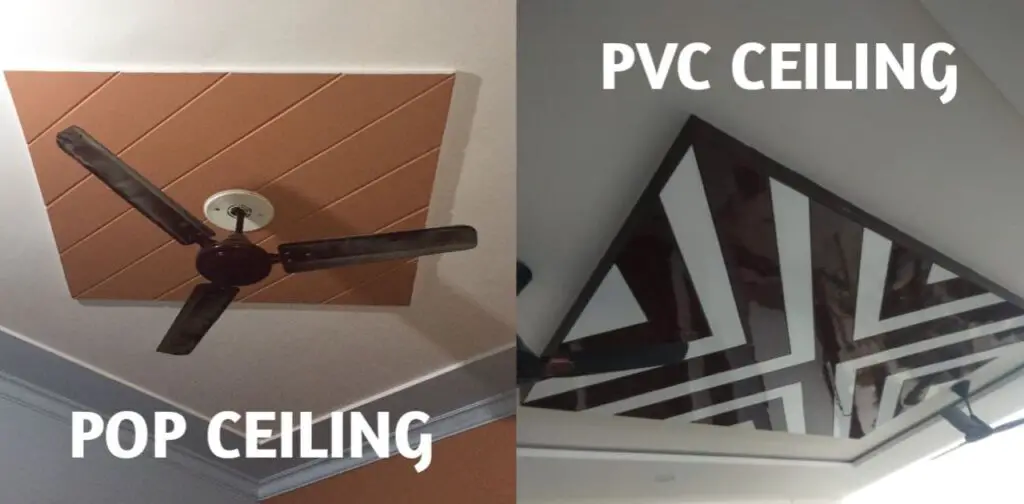

This is certainly a great write-up. Thank you for bothering to explain all this out for all of us. It’s a great help!